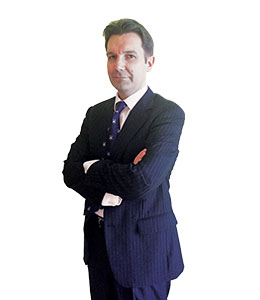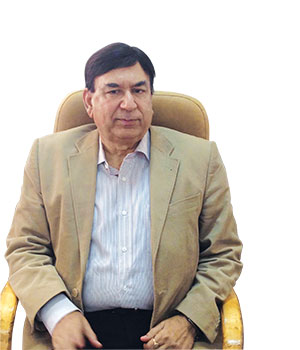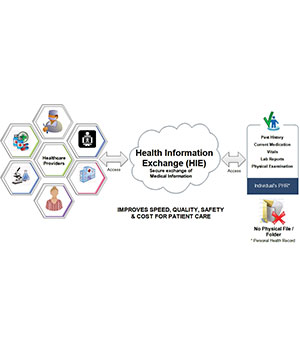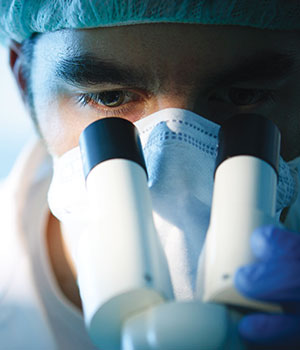
Many patients post knee and lower limb surgery have severe pain, says Dr Kailash Kothari, Spine and Pain Consultant, Global Hospital
Please share with us the latest treatment trends for acute pain management.
Anaesthesia aims to reduce the patients surgical pain. Earlier only pre-operative care was done by an anesthesiologist and postoperative pain management was done by the surgeon, however as the role of anesthesiologist has grown as peri-operative physician. Pain management in post operative period has become more specialized, the service provided today by anesthesiologists. Role of an anaesthesiologist as Acute pain management specialist involves planning and giving round the clock safe medication in correct doses, training a nurse in the hospital called a pain nurse/ residents who ensures that all surgical patients pain is controlled within limits and follows a protocol of treatment to reduce the pain. The idea is to make the patient happy by keeping them pain “free. There are various techniques like insertion of epidural catheter in cervical, thoracic or lumbar area for targeted pain relief. Now, there are pumps available to deliver the drug into the body through epidural catheter or IV lines, called patient- controlled analgesia (PCA). PCA provides a fix flow of drug in the body. Patients can control their pain themselves just by the click of a button on PCA which deliver a pre-designed dose of the drug and patients feel relief in minutes. There is a lock-in facility (for safety and to avoid overdose) which ensures only the prescribe limit of the drug is take by the patient in a day. Many patients post knee and lower limb surgery have severe pain. To help them recover quickly, we put in a catheter under guidance of USG/nerve stimulator/both in the peripheral nerve supplying surgical area. This provides local analgesia we inject small dose of the drug or a placement of catheter for continuous infusion of drug. Thus a small dose can provide a very good pain relief. As the patients recoup faster, there is huge saving in the hospitalization cost.

Please share some new techniques in chronic pain management.
As we move into chronic pain management, this is an area where the concept of pain clicnics has come up. Chronic pain have various causes. Back and neck pain constitutes is the most common and is a huge burden on healthcare system. This is followed by cancer pain and neuropathic pain (due to direct damage of the nervous system). In pain clinics pain physicians deal with these problems in a peculiar manner. Many patients we cannot diagnose the source of pain. We do nerve blocks technique with patients to diagnose the source of pain. This is called diagnostic block, wherein we give local anaesthesia under X Ray or ultrasound control and observe the pain following drug administration, to review if the pain is relieved or not. Diagnostic block helps us to understand the exact source of the pain. Once the pain generator is identified and treatment easier and faster. If we look at back pain, the pain management system has evolved over time for treating spine pain coming from herniated discs, facet joint and spinal nerve pains. Facet Joint is very complicated and many details get missed even on MRI. Our approach is to inject a small dose of local anesthetic drug using fluoroscopic guidance, Once diagnostic block relieves the pain, for permanent relief you can do radio frequency ablation of the nerves supplying the joint. The common and effective treatment offered to slip disc patients is transforaminal epidural steroid injection (TFESI). This works as diagnostic and therapeutic injection. Most times patients get lasting pain relief and may avoid surgery. Even if the pain comes back, the cause of pain is understood and we can conduct a successful surgery at perfect level to address the core source of pain generation. This new method that helps the surgeon about outcome of surgery is used very commonly in hospitals all over the globe The patients benefit the most from this technique. In addition, there is a new technique such as the spinal cord stimulator (pacemaker in the spine) that is used on patients that have already had multiple surgeries but severe pain continues. This involves putting a catheter electrode inside the epidural space and we connect it to pacemaker with a battery. These blocks all the pain sensation and can relive pain for 10 -12 years. The control (remote) of the device is with the patient and they can control the pain themselves at whatever time they need.
The role of new imaging techniques
Technology to relieve pain has improved and so has the technique for surgery. Earlier it was X-Ray guided in radiology suits; now it is the C-Arm or the Fluoroscope (a live X-Ray machine in Operation Theatre) under which we can guide the needle to a particular area and inject the drug. We use the radio-opaque dye that can be seen flowing in the right area which is to be injected with pain drug or apply radiofrequency current. Ultra Sonography and Colour Doppler are also beneficial in localizing and placement of drugs under direct live imaging.
Pain clinic is coming up in a big way in the future, especially in India. In other countries, pain management clinics are one of the biggest day care department in large hospitals
Tell us about the scope and use of pain management for cancer patients.
The most commonly used technology for long lasting pain relief is the radio frequency generator. There are some nerves that only perform sensory functions, thus we use radio frequency to burn that nerve and relive the pain it was causing the patient. This technique is also used in many other conditions including facet joint pains as mentioned above. The patients sufferings from cancer have to undergo pain management and palliative care. Each part of body has nerve supply carrying the pain sensation to spinal cord and brain. We can use the nerve block technology from head to toe depending on where the pain is? We can also apply radio frequency technology to control the pain for prolong duration. We also use chemicals like alcohol and phenol in different concentration to perform neurolysis for cancer pain relief. With newer techniques cancer pain is managed very well and the patients can live the life well. Pallative care itself has developed into a speciality. This involves management of drugs like morphine and many other newer drugs which have come up for providing better quality and sustained pain relief. Today there are sustained release formulations of morphine for longer duration and sustained pain relief. Newer drugs like Fentanyl and Buprenorphine are available as skin patches and after the patch is applied the patients pain is relived as the drug is absorbed in the body. These technologies are a boon for patients today as these were not available 10 years back. Once applied these patches provide 3-7 days of pain relief for Fentanyl and Buprenorphine respectively.
Please share your dream technology that you are waiting to arrive in India.
Pain clinic is coming up in a big way in the future, especially in India. In other countries, pain management clinics are one of the biggest day care department in large hospitals. They have a dedicated separate area for pain management. Many clinics are multispecialty pain clinics. In spine surgeries, now we are going for minimally invasive spine treatment, through an endoscope without any cut using a needle we can remove an entire bulging part of the disc. These endoscopic surgeries are very beneficial for the patients. This is a selective procedure that we have started already but I am awaiting for it to gain pace in India. Spinal Cord Stimulator is another transformational technology which can be used to recover paralysed patients of spinal cord injury. These can be technology of the future.
Be a part of Elets Collaborative Initiatives. Join Us for Upcoming Events and explore business opportunities. Like us on Facebook , connect with us on LinkedIn and follow us on Twitter , Instagram.











